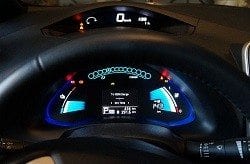
Other developments include self-driving cars which are already legal in some states, and the self-parking feature, which is in place on more and new model vehicles — the latest allows you to exit the vehicle and activate the parking feature with a smartphone app.
In this post, we will look at the usage of the latest technology on the road now in the latest auto models. Many of these devices are early warning devices. While for most consumers these have been available only as add-ons, they are increasingly installed by car manufacturers as standard equipment.
A recent article reports that while many driver warning technologies have great potential to prevent accidents and save lives, many drivers, especially seniors, are finding the devices unpredictable and startling, and possibly distracting. As a result, they find it easier to disable technology that beeps at them suddenly for an unknown reason. Or even worse, they may be under the impression that the device will brake or swerve for them when the device only provides a warning.
The missing ingredient in this picture is driver education. In many cases, the information from the manufacturer is too lengthy and technical to be accessible for the general consumer. On the other hand, even when simpler instructions are available, drivers cannot be bothered to read up on yet another device when all they want to do is get in and go. According to the article, for some drivers, only instruction and practice will make these devices usable and effective.
If you have a new recent-model car with safety equipment installed, ask your dealer to teach you the ins and out of your new system. It can be a great asset if you learn to use it properly. However, it is not a panacea that allows you to drive and text or drive while too tired to focus on the road properly. As we have noted in other posts, ultimately the driver is responsible for his or her actions and must remain alert and drive defensively.
Stillman and Friedland are always here to give you tips on staying safe on the road.
Because we care about you!






